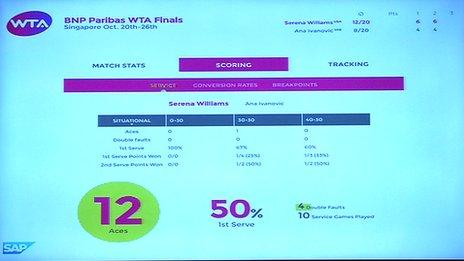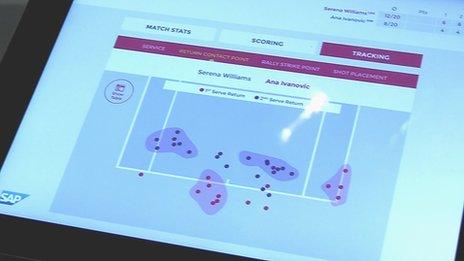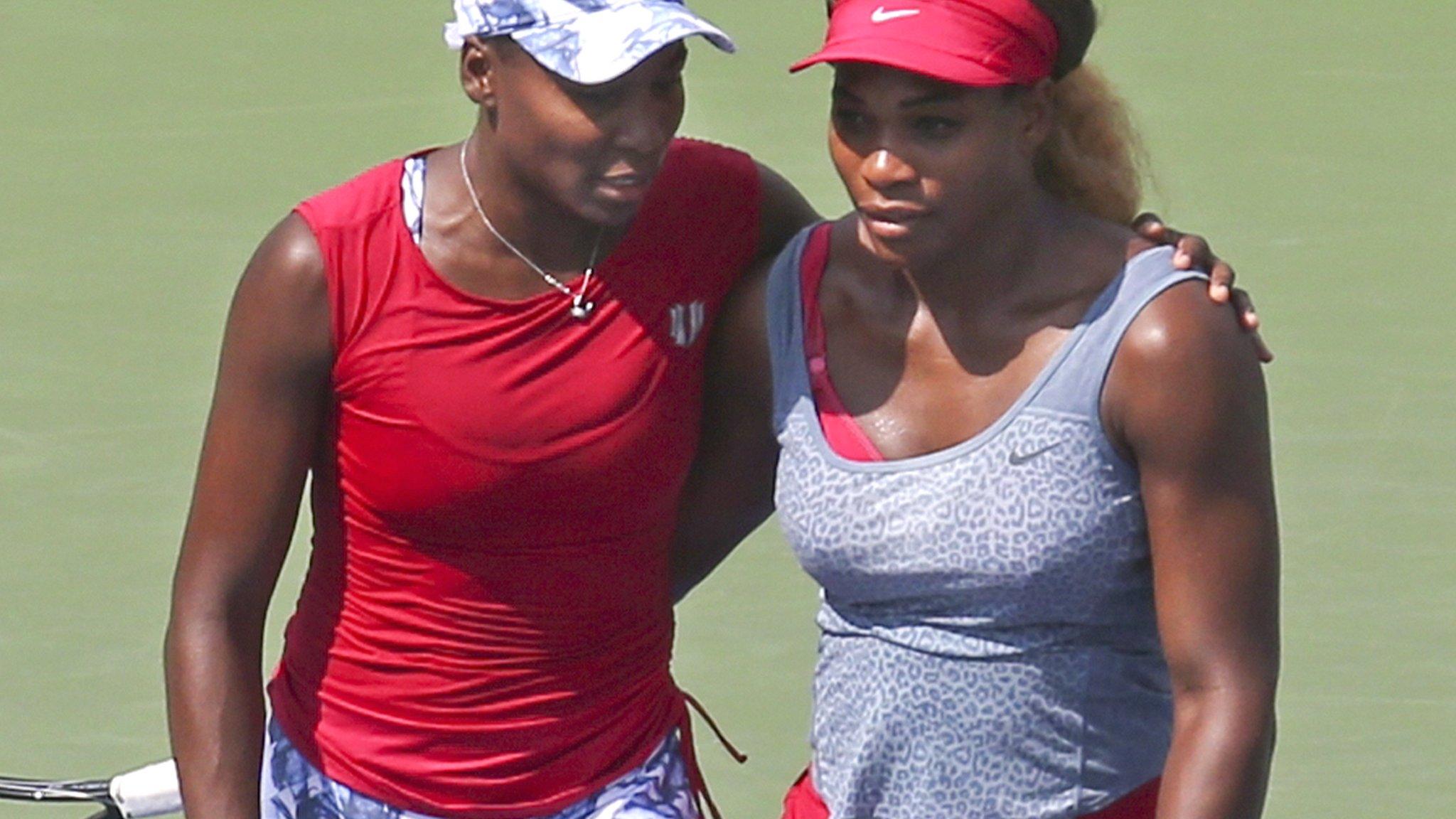Tablet tennis: How app could transform the women's game
- Published

WTA players will be able to see instantly what their tendencies are
It's the final set and two of the top tennis players on the planet are about to fight out the crucial moments of a tough game.
The crowd are silent and on the edge of their seats. They're waiting to see their favourite player serve a devastating blow to their opponent.
Instead, an on-court coaching session is called and both players sit down with their coaches.
They start to analyse what they've been doing right or wrong using a tablet with real-time game analytics on it.
It sounds like a ridiculous scenario, but you could see something similar in women's tennis from next year.
First-serve percentages
SAP has developed a program for the Women's Tennis Association (WTA) that will allow players and coaches to view - in real time - what's been happening during a match.
The program was launched this week at the WTA Finals in Singapore and will be used for the first time in January during the Brisbane Invitational tournament in Australia.
The information gathered by the program - or app - can be viewed on a tablet and coaches can ask to see whatever kind of breakdown of the game they need.

Real-time statistics will be available to players and coaches during a match
"The screen is basically tracking simple kinds of stats around aces, double faults, first-serve percentages," said SAP's technology lead for tennis Jenni Lewis.
"What [coaches] will be able to do is actually look at that and drill down a little deeper to be able to find exactly what's happening out there on court."
SAP said players and coaches could determine how they would like to see the information, and what statistics were most important.
The game statistics and analytic breakdown will be available in "slightly delayed real time", SAP said, accounting for a 15-second delay.
Connecting fans
If you're a fan of women's tennis and you've been following the WTA tournaments around the world, you'll know that on-court coaching sessions in changeovers and between sets have been allowed since 2008.
During televised matches, the coaches wear a microphone in order to capture their conversations with the players.
The idea is that fans at home and in the stadium should feel more connected to the game and the players. They can hear the coaches' tips and listen to players' concerns.
To date, the point-by-point statistics gathered during a game by SAP have been available to coaches and players only after a match has finished.
WTA chairman Stacey Allaster said the game of tennis overall, compared with many other sports, had been slow to take up new technology.
But she said the game today had become data-driven and information was power.

Real-time heat maps of play will be available for players and coaches during a match
"Many of our matches usually come down to just a few key points and any advantage that players and coaches can gain by analysing trends and data could deliver an edge in the match."
Ms Allaster also said the new technology would provide a great opportunity for the media "to bring the show, the matches, closer to the fans who aren't in venue."
'Unique sport'
But it's not something the men's tour, the Association of Tennis Professionals (ATP), or the grand slams have picked up, as they continue to ban coaching during matches.
Craig Davison, director of tennis at the Sydney Olympic Park Tennis Centre, has been coaching for 28 years and does not agree with on-court coaching.
"I think that tennis is a unique sport in the world, in that you don't have contact with your coach during a match," he says.
"It teaches so many things about how to play sport, and how to get out of trouble on your own, and that makes tennis very special.
"So if they were to introduce that kind of on-court coaching or technology to the men's game, I would be very upset."
Mr Davison also said one major concern would be to see women players become too reliant on the use of the new technology.
"But if the women are for it, then who I am I to say anything against that?" he said.
Saving time
Ms Allaster said the program, in addition to improving the game for players and fans, would save coaches time and effort.
She said it would help them avoid "the old-fashioned writing the scouting reports down, spending evenings in their hotel room watching matches".
SAP's Chris Burton said the new technology would also record data across an entire season and that data collected since 2008 would be available for players and coaches.
"Players are going to be able to see what their tendencies are, or what their opponent's tendencies are," he said.
"And I think that's what you're going to see when this gets to Brisbane in January."
Fans will also have access to some of the statistics available to the coaches and players during a match, although the WTA said it was still working through the details of that access.
The WTA runs 54 competitions across 33 countries, with some 3,000 matches each year. The WTA Finals are in Singapore until 26 October.
- Attribution
- Published20 October 2014

- Attribution
- Published20 October 2014
